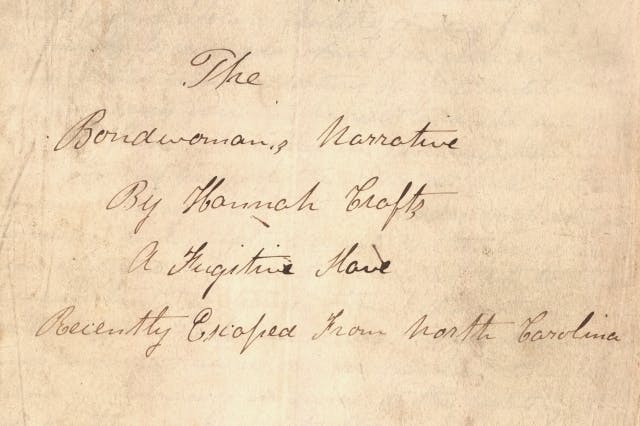Slavery From the Inside — as Only a Slave Could Show It
Certain scholars doubted an ex-slave could have written ‘The Bondwoman’s Narrative,’ a novel that channeled Dickens’s ‘Bleak House’ and evinced familiarity with the genres of gothic and sentimental fiction.

‘The Bondwoman’s Narrative’
By Hannah Crafts
Narration by Anna Deavere Smith
Hachette Audio
‘The Life and Times of Hannah Crafts: The True Story of The Bondwoman’s Narrative’
By Gregg Hecimovich
Ecco, 432 pages
Anna Deavere Smith’s forthright reading of Hannah Crafts’s powerful autobiographical novel makes the antebellum South palpably present. Included in the audio book is the testimony of a distinguished African-American scholar, Henry Louis Gates, who was instrumental in publishing, in 2002, a book taken directly from a manuscript in the author’s own hand, a rarity in itself, since nearly every 19th-century slave narrative was filtered through the auspices of white abolitionists.
Next to nothing was known in 2002 about Crafts. Certain scholars doubted an ex-slave could have written the novel, which channeled Charles Dickens’s “Bleak House” and evinced familiarity with the genres of gothic and sentimental fiction. They asked: How could a slave, or ex-slave, possibly have come by this literary heritage?
In addition to genealogical research that put Crafts in the right place at the right time, and expert analysis of inks and paper, Mr. Gates pointed to internal evidence of Black authorship. White authors invariably described the physical characteristics of slaves in racist terms. Crafts, on the other hand, eschewed racial epithets and made sparing use of the “darky” dialect favored by white authors.
Gregg Hecimovich, after two decades of diligent research, has by and large refuted the skeptics. He shows that Hannah Crafts grew up in a white household that had literate slaves and used them as secretaries. Her master had “Bleak House” in his library. Mr. Hecimovich is also able to trace important aspects of the novel’s style to the curriculum of a woman’s college in the vicinity of Crafts’s place of enslavement.
“The Bondswoman Narrative” provides a far more sophisticated picture of the psycho/sexual/social aspects of slavery than was available to white abolitionists in the 1850s and ’60s. Especially impressive are the exchanges between the slave Hannah and her white mistress, who, by turns, treats Hannah as an intelligent interlocutor and a devious wretch whom the mistress feels has betrayed her. The arbitrariness of a white woman with all the power is rendered in excruciating, convincing detail.
Much about Crafts remains elusive and is probably lost to history, though Mr. Hecimovich is still on the case. So far the biographer has been able to trace her path to freedom, and to suggest that her life was still at risk in the 1850s, which is one reason why she chose to write fiction, not a memoir.
Fiction also allowed Crafts to draw on the lives of other female slaves who escaped to freedom. Several of these women have been proposed as authors of the novel. Mr. Hecimovich meticulously shows why, in the end, Crafts has to be the author. Even so, that so many female slave runaways could possibly have written this work of fiction actually strengthens the claim that one of them did.
What no one can answer definitively is why Crafts never published her novel, while her descendants carefully preserved the manuscript. The biographer notes that in the post-Civil War years — seven or eight years after the novel was probably written — the market demand for such narratives had diminished, and in some cases slave memoirs and novels published then received a hostile reception. It may have been enough, the biographer reasons, for Crafts to circulate her work among friends and family.
As persuasive as Mr. Hecimovich’s research is, he concedes that many of his conclusions are speculative. All too often he resorts to that “must have been” trope that biographers employ when they don’t have the evidence. The “must have” ploy is especially troublesome when Mr. Hecimovich concludes his biography supposing that after the Civil War, Crafts led a happy life in an enduring marriage. That could very well be true, but we just don’t know what kind of relationship she had with her husband, though the marriage depicted in the novel is loving.
In other words, Mr. Hecimovich comes perilously close to the ending of a sentimental novel akin to “The Bondwoman’s Narrative,” in which the female protagonist lives happily ever after. It may be so, or it may be, at least in part, a fiction.
Mr. Rollyson’s writing about African American lives is included in “American Biography.”

